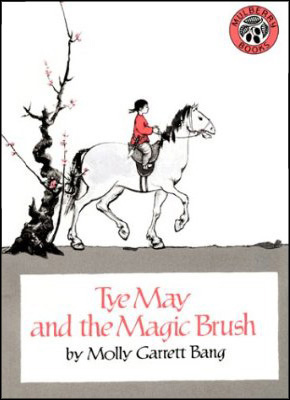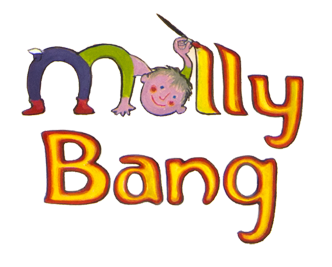
Tye May and the Magic Brush
First published in 1981.
About the Story
Tye May and the Magic Brush seems like it's a traditional Chinese folktale, but it is more a story that uses the folktale syle and structure to teach specific values. It was written by an anonymous person working for the Ministry of Education of the People's Republic of China. Then I changed a couple of things in the story as well. I found this story in a collection of tales, written in Chinese, in the Harvard-Yenching Library, where I was studying Far Eastern Languages and Literatures. All the stories seemed like folktales. All were about a child hero or heroine who was fighting the Forces of Evil, and who triumphed in the end—although in several of the stories, the hero/ine died as s/he brought peace or security to the people. In several of the stories, the Bad Guy took the form of an American soldier or a corrupt official of the former Chinese government. I soon realised—was it in the introduction or was it just obvious from the stories? I can't remember—that these were modern stories that had been created to promote very specific ideas and ideals of the Communist government. These were propaganda stories. They led me to explore other ways in which certain values were taught to children and to the general public in modern China. Here's a bit of what I learned.
When Mao Tse-tung gained control of the Chinese mainland and established the People's Republic of China in 1949, he inherited a nation which had just spent almost 25 years fighting Japanese troops and then fighting a civil war of Chinese Communists against Chiang Kai-shek. The country had been governed largely by individual provincial landlords, who taxed the peasant farmers heavily in order to support their large armies. The Chinese were not united as a nation, and Mao understood that national unity was crucial. He also wanted to change people's attitudes towards themselves from that of subservient serfs to workers and comrades. Thus, the main job of the Ministry of Education was to instill Communist ideals and a sense of national unity in the population.
I don't know anything about how this happened. I've heard and read how every citizen of China had to read Mao's Little Red Book and discuss it in required communal meetings, how radios on trains and buses constantly read passages from the book, how travelling theaters gave plays in the remote provinces that recounted the struggles of peasants against the warlords, and the sacrifices individuals had made for the good of the people. I also saw many posters that promoted joyful communal work, sharing of one's wealth with others, compulsory education of all children, smaller families, and public health and cleanliness. In addition, I saw beautifully illustrated children's books that promoted the same values, with some terrific stories. Many were true stories of children who had died bravely during the wars—either against Japan or against the forces of Chiang Kai-shek.
So Tye May and the Magic Brush is part of this tradition of teaching Communist values through stories. I changed it in two ways that I can remember. The first is that I changed Tye May into a girl. The original version's hero is a boy named Ma Liang. Secondly, the original version has the emperor and his ship full of courtiers drowning in the sea. I thought it was more appropriate for them to live out a long life the way the peasants had lived theirs—in hard work and poverty.
The story is illustrated in pencil, except for the illustrations "made by" the magic brush, which are done in brush and ink. Since this is a 'ready to read' book, I was restricted to one extra color; I chose red both because this is a lively color, and because it is the color that represents vitality, blood and communism to the Chinese.
Click here for Questions and Activities related to Tye May.
copyright 2018 by Molly Bang


